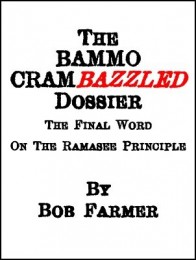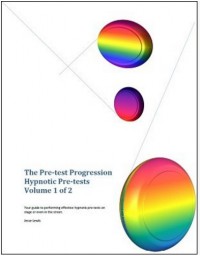My Account
This product was successfully added to cart!
Charles Fort by Jim Steinmeyer
 Shipping: International shipping available
Shipping: International shipping available Shipping time: Instand download
Shipping time: Instand download Discount: Purchase more than $15 and get automatically 20% discount on checkout (more than $4.99 for 10%, $12 for 15% discount on checkout)
Discount: Purchase more than $15 and get automatically 20% discount on checkout (more than $4.99 for 10%, $12 for 15% discount on checkout) Handling time: Send within 1 business days after receiving cleared payment
Handling time: Send within 1 business days after receiving cleared payment Returns: 7 days money back guaratee
Returns: 7 days money back guaratee
Product Detail
IMPORTANT! READ THIS FIRST
Shipping Guide
Sending Time
Product Tags
Charles Fort – Jim Steinmeyer
Posted by Greg at 02:46, 03 May 2008
We all grew up hearing those "believe it or not" tales of spontaneous combustion, frogs and fish falling from the sky, and other strange phenomena. Most of the general public don't know, however, that these impossible anecdotes originated not from scientific studies, but from the research of one man: Charles Fort. Spending untold hours in libraries, scanning newspapers and journals for strange happenings, Fort's work was so groundbreaking and far-ranging that these phenomena are now known by the simple appellation, 'Fortean'.  However, while the word Fortean may be well-known, even appearing in the Oxford dictionary, the man himself remains a mystery to most.
However, while the word Fortean may be well-known, even appearing in the Oxford dictionary, the man himself remains a mystery to most.
Publishing house Tarcher Penguin have gone a long way to remedying this oversight however, with the simultaneous release (in the U.S.) of two books which – together as a compendium – offer a wonderful path to understanding more about the origins and subject matter of Forteana: Jim Steinmeyer's biography Charles Fort: The Man Who Invented the Supernatural (Amazon US and UK), and the anthology The Book of the Damned: The Collected Works of Charles Fort (Amazon US andUK). The latter is made up of Fort's four best-known books - Lo!, New Lands, Wild Talents, and the Book of the Damned - and features an introduction by Steinmeyer as well.
One can't underestimate the task Jim Steinmeyer takes on in telling the life story of the "mad genius of the Bronx". An intensely private man, Fort spent most of his adult life researching in libraries, writing at home, or relaxing with his wife Annie – hardly the makings of a cracking read. But if you can make the Statue of Liberty disappear – Steinmeyer is a renowned magical designer and historian, whose credits include the invention of David Copperfield's famous New York illusion – then illuminating the life and works of this one, strange American man shouldn't be too much of a step up.
He accomplishes this task through the words of the man himself. Using autobiographical notes, book excerpts and correspondence, Steinmeyer explores the harsh childhood Fort endured, his growth into a career in journalism and writing, and the formation of personal philosophies related to Monism – seeing connections between all things – and yet at the same time an exceptional skepticism of anything orthodox or authoritarian. Even when Fort began (unintentionally) attracting his own 'devotees' – the Fortean Society – he felt the urge to poke fun at the institution:
We have a new cult. The Forteans are now very old-fashioned. They're three months old, and that is long enough for any cult. We are the Neo-Forteans.
While the odd subject matter of Fort's books is often seen as their selling point, Steinmeyer's biography also shows that his searing wit and ability to enlighten through satire (depending on the openness of the reader, of course!) were equally formidable assets contributing to his success. His insights attracted the friendship, and virtual patronage, of writer Theodore Dreiser. Steinmeyer pivots much of his book on the relationship between Fort and Dreiser – alike in so many ways, and yet at times seemingly separated by a vast gulf. Using correspondence between the two to illustrate reaction and counter-reaction in discussing various philosophical points, we get a picture of a man who literally lives for the exploration of new, heretical ideas.
Steinmeyer's book also portrays a man wary of being consumed by his interests. Fort collected many tens of thousands of short notes throughout his life and research, which he fastidiously catalogued and stored. And yet, on at least a few occasions, Fort felt compelled to destroy them – an act that must have taken some extraordinary will (or foolhardiness). Moments such as these are the ones that best illustrate Charles Fort, and Jim Steinmeyer does well to bring them to our attention.
I would only offer a few criticisms of Steinmeyer's biography. Occasionally the timeline skips around without clarification, most often when a future event is referenced in illustrating a point – without a reference point for where Fort's life currently is, this creates a little confusion about the period being discussed. Also, there are a few short passages about apparent paranormal manifestations in Fort's life, but there is no further exploration of this side of things – something that may have helped add some fitting high strangeness to the biography. This may be no fault of Steinmeyer's however, as his knowledge of these events may be limited to the resources at hand. Lastly, Charles Fort: The Man Who Invented the Supernatural is more hagiography than biography. Fort was no doubt a wonderful literary and -dare I say it – scientific figure – but he also had his foibles, and in his speculation and criticism got some things terribly wrong. While I certainly would not like to see a CSICOPian character assassination, this biography could have done with more deconstruction of the perils of combining biting satire while sitting on the periphery of orthodox thought.
As for Fort's writings, Tarcher's anthology The Book of the Damned is a worthy companion to Steinmeyer's biography (and both books are beautifully packaged). Personally, I've always struggled to read Fort's work for long periods. Fort's prose tends to jar the mind with staccato, dissonant chords, rather than long melodies of harmony and counterpoint. However, he does possess a brilliant turn of phrase – he can illumine as much in one short passage of vitriolic satire than most writers can achieve in a chapter. And one of his underlying themes – of the 'untouchable' nature of science – seems remarkably prescient in terms of the current prevalence of fundamentalist skepticism and the 'new atheism' – the ugly dichotomy of "with us or against us" religious or scientific faith. Instead, Fort walked the line between:
…Poor old theology hammered around, but
PLEASE NOTE: This item is a downloadable Video or Ebooks . Gimmick not included.
Once your order information has been verified, we will send URL links direct to your email address. They will appear as hyperlinks. You simply click on each link one by one, and accept the download on to your hard drive. Downloading time will depend on a variety of factors, such as your local bandwidth, etc.
The following is the process you should take to complete your order through bank to bank transfer:
1. Please go to your bank (through online banking, ATM or going into a branch) and complete the transfer of money. Make sure that the amount you transfer is the exact total of your order. Payment details below:
- If your bank is located in Austria, Germany, Spain, France, United Kingdom, Italy, Netherlands, Belgium, Finland, Greece or Luxemburg you will pay to our WorldPay bank. You will see the bank details once you have placed the order.
PLEASE NOTE: If you are paying to our WorldPay bank you MUST include the Unique Payment Reference Number (you will receive this directly after paying the order) in the description section when completing payment to help us identify your order. Failure to do this will result in an unsuccessful transaction.
- If your bank is located in a country not listed above you will pay to our HSBC account. The details are below:
Bank Account:
Bank Code:
Beneficiary:
Bank Name:
Bank Address:
SWIFT Code:
PLEASE NOTE: If you are paying in this way you MUST write your Yourname order number in the description section when paying so we can easily recognize your payment. Failure to do this will result in a delayed or failed transaction.
2. When this is done, log in to your Yourname ‘My Account’ and complete the following:
Click ‘Order list’
Click ‘Pay’
Click ‘Complete Payment’ and fill in the related information for verification (This is an important step. If the information you have filled in does not match your bank details the payment can not be completed.)
Click ‘Submit’ to finish the procedure.
3. You will receive a payment confirmation email from us after your order’s payment has gone through successfully. If you do not receive this email, please contact us here: http://www.dlmagicstore.com/help/
Please note that dlmagicstore will begin to handle your items after payment has been cleared.
All magic ebooks and videos are send via email .If the file already been upload ,we can send immediately . If not , we need 2 or 3 days to upload the file .







